
|
Astronomy Picture Of the Day (APOD)
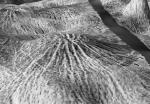 One Hundred Kilometer Terrain on Venus
One Hundred Kilometer Terrain on Venus
7.05.2001
Even the hot and cracked surface of Venus has rolling hills. Although never actually photographed from up-close, images of the Venusian surface like that shown above have been constructed in recent years by digitally merging distant photographs with height-sensitive radar. Isolated above is a 100-kilometer wide swath inside a volcanic region known as Yavine Corona.
 The Pleiades Star Cluster
The Pleiades Star Cluster
6.05.2001
It is the most famous star cluster on the sky. The Pleiades can be seen without binoculars from even the depths of a light-polluted city. Also known as the Seven Sisters and M45, the Pleiades is one of the brightest and closest open clusters.
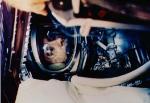 Shepard Flies Freedom 7
Shepard Flies Freedom 7
5.05.2001
Forty years ago today (May 5, 1961), at the dawn of the space age, NASA controllers "lit the candle" and sent Alan Shepard arcing into space atop a Redstone rocket. The picture shows the pressure-suited Shepard before launch in his cramped space capsule dubbed "Freedom 7".
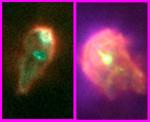 Protoplanetary Survivors in Orion
Protoplanetary Survivors in Orion
4.05.2001
The Orion Nebula is a nuturing stellar nursery filled with hot young stars and their natal clouds of gas and dust. But for planetary systems, the active star-forming region can present a hazardous and inhospitable birthplace.
 Far Side of the Sun
Far Side of the Sun
3.05.2001
You may think it's impossible to see through the Sun, but maps of the Sun's far side are now made routinely by instruments on board the sun-staring SOHO spacecraft. This is one such map from April 12.
 Planet Building in HD 100546
Planet Building in HD 100546
2.05.2001
More than 100 billion boulders may be swarming in the disk around nearby star HD 100546. In a scene thought similar to the early years of our own Solar System, ever larger rocks are growing by colliding and accreting dust as the messy business of planet formation appears to be underway.
 Antarctica Hears Little Matter in the Big Bang
Antarctica Hears Little Matter in the Big Bang
1.05.2001
On the frozen tundra near the bottom of our world, increasingly sophisticated instruments listen for a more precise echo of how our universe started. Sunday, independent collaborations behind three such instruments announced evidence that...
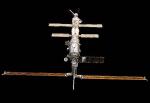 Approaching the International Space Station
Approaching the International Space Station
30.04.2001
Earlier this month the crew of the US Space Shuttle Endeavor took in this view as they approached the developing International Space Station (ISS). The Endeavor and ISS crew installed Italy's Raffaello...
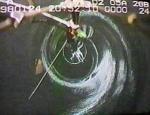 Ice Fishing for Cosmic Neutrinos
Ice Fishing for Cosmic Neutrinos
29.04.2001
Scientists are melting holes in the bottom of the world. In fact, several holes have been melted near the South Pole, and they are now being used as astronomical observatories. Astronomers with the Antarctic Muon and Neutrino Detector Array (AMANDA) lower into each vertical lake a string knotted with basketball-sized light detectors.
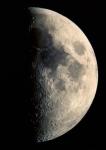 The Moon and All the Crashes
The Moon and All the Crashes
28.04.2001
A clear blue summer sky finally grows dark and the new telescope, hastily set up in the backyard, generates excitment and anticipation. "I bought it for the kids.", Dad assures himself as he anxiously supervises two young boys' efforts to center a bright, first quarter Moon in the finder.
|
January February March April May June July August September October November December |
||||||||||||||||||||||||||||||||||||||||||||||||||||||||